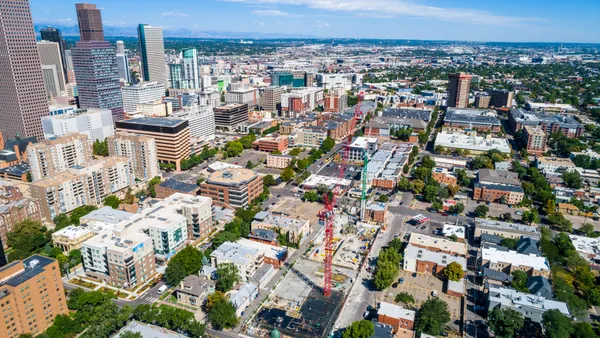Dive Brief:
- The U.S. General Services Administration has updated its standards for federal buildings to accelerate the adoption of cleaner and more efficient technologies.
- The P100 Facilities Standards for the Public Buildings Service sets mandatory design and construction standards and performance criteria for 300,000 federal buildings across the U.S. The updated standards include benchmarks for electrification, energy efficiency, water reuse, embodied carbon, grid-interactive efficient buildings, labor practices and construction decarbonization, the GSA announced Monday.
- “These new standards represent GSA’s decades-long commitment to sustainable design practices and will accelerate our progress toward achieving a net-zero emissions portfolio by 2045,” GSA Administrator Robin Carnahan said in a statement.
Dive Insight:
Under the P100, facilities are required to adopt energy conservation technologies and eliminate on-site fossil fuel use — directives that align with the Federal Sustainability Plan’s goals of realizing net-zero emissions by 2045, the GSA said.
The 2024 standard establishes new standards for electrification by requiring building equipment and systems to be powered by clean energy sources and new measures that can boost the efficiency of buildings to support a more resilient and responsive grid, the GSA said in a news release.
For example, when evaluating alternatives for electrifying HVAC and domestic water heating systems, the GSA requires lifecycle cost analyses and an assessment of operational scope 1 and scope 2 greenhouse gas emissions of each of those alternatives, according to a May 2024 document listing the updated standards’ general requirements. These analyses must consider the long-term costs and the emissions impact of each option and include heat pump technologies as part of the evaluation. Any system selected for electrification must be cost-effective over its lifecycle, even if electric resistance heating is used, the GSA says.
The document notes that a building's energy performance is evaluated by considering a building’s overall energy consumption and carbon emissions “synergistically” on an annual basis. The related attribute of energy cost is required to be reported for LEED certification and “this may be a driving requirement in terms of systems selection, particularly thermal storage, and demand peak shaving [and] load offset,” the GSA says.
Additionally, new buildings are mandated to have a 15% potable water reuse rate and meet enhanced building envelope performance standards to minimize energy loss and increase overall efficiency. Benchmarks are also provided for the use of low-embodied carbon materials, including salvaged, reused, regenerative and biomimetic options, and new low-carbon methods for constructing federal buildings, including off-site assemblage, clean energy operations and material salvage, the GSA said.
Further, the 2024 P100 sets new standards aimed at protecting workers from unfair or unsafe labor practices, including protection from extreme heat, and bans child labor and forced labor across supply chains, per the release. The construction, operation and occupation of facilities must comply with regulations from the U.S. Occupational Safety and Health Administration, the GSA noted in the P100 document.
The P100 is updated and published every three years, the GSA said in its news release. The 2024 standard draws on “innovative technologies” through GSA’s Green Proving Ground program, the agency said. The agency recently said it is expanding this program as part of a $9.6 million effort that would involve testing 17 emerging and sustainable technologies, including those that can lower on-site energy consumption from HVAC systems.














